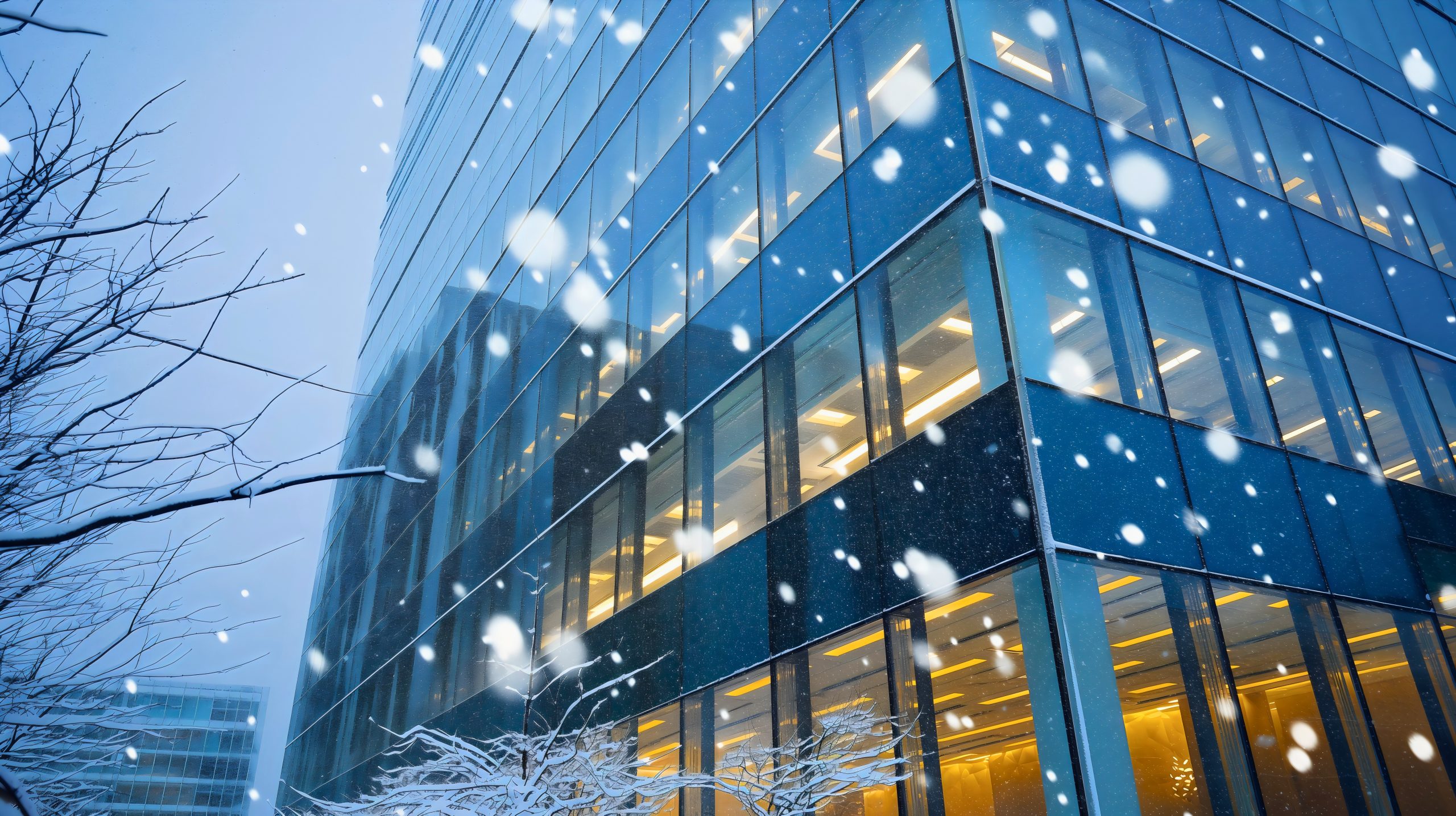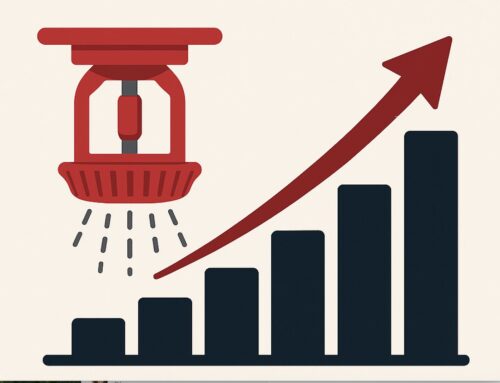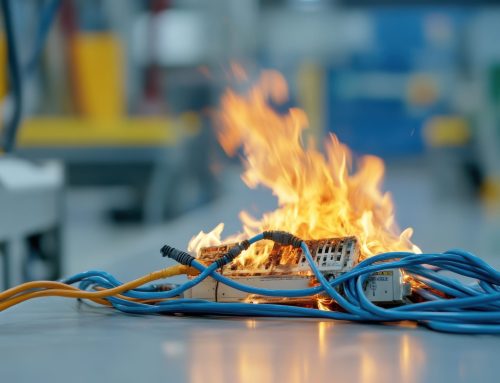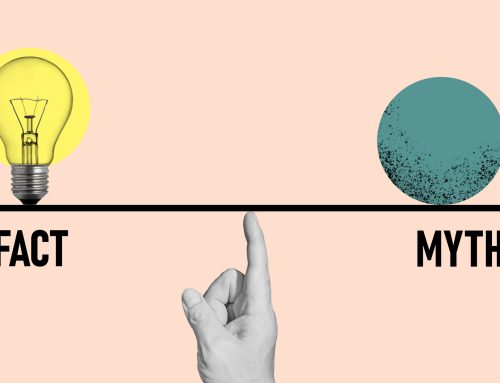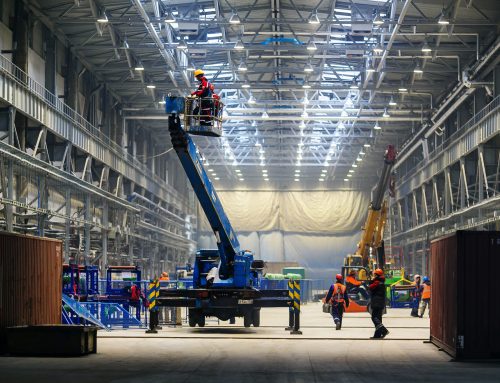As the winter months approach, Georgia-based business owners must take proactive steps to make sure their fire sprinkler systems are ready to handle freezing temperatures. Winterizing your fire sprinkler system is crucial for avoiding costly repairs, maintaining fire protection, and ensuring compliance with safety regulations. This guide provides a detailed checklist to help you winterize both wet and dry pipe sprinkler systems effectively.
Why Winterization Matters
Fire sprinkler systems are highly effective in protecting property and lives, but they are vulnerable to freezing temperatures if not properly maintained. Two common problems during winter include:
- Frozen water in dry pipe systems: Accumulated moisture can freeze, causing blockages or pipe damage.
- Inadequate heating in wet pipe systems: Unheated areas can lead to frozen pipes, rendering the system inoperable.
Proactive winterization not only protects your system but also ensures uninterrupted fire safety for your business.
Winter Weather Preparedness Checklist
Winterizing dry and wet pipe sprinkler systems involves different approaches due to their design. It’s important to know what type of system you have in your building, as well as the steps you’ll need to take to prepare your system type for winter weather.
Dry pipe systems contain pressurized air instead of water, so winterization for these systems focuses on preventing moisture accumulation. Key steps to prepare dry systems for winter include draining low-point drains weekly, repairing leaks, and ensuring the air supply is dry or using nitrogen to avoid freezing.
Wet pipe systems are filled with water, making them more prone to freezing. Winterization for this system type involves maintaining building heat at a minimum of 40°F, insulating pipes, and addressing vulnerable areas like attics or crawl spaces.
Both systems requires targeted maintenance to prevent freezing and ensure functionality during colder months.
Wet Pipe Sprinkler Systems
Wet pipe systems rely on water-filled pipes, making them especially susceptible to freezing. Follow these steps to safeguard your wet sprinkler system:
- Maintain Building Heat
-
- Keep the temperature at a minimum of 40°F in all areas with wet pipe systems.
- Check the coldest points of the building, such as eaves, shipping doors, and spaces without direct heating, to ensure they maintain at least 40°F.
- Consider installing low-temperature alarms in areas where heating may be unreliable.
- Inspect the Building Shell
-
- Close unnecessary openings to prevent cold drafts.
- Repair cracks, holes, or other structural vulnerabilities that allow cold air to seep in.
- Identify Vulnerable Areas
-
- Check crawl spaces, attics, and areas above suspended ceilings where water pipes are located.
- Ensure these areas are accessible for inspection and maintenance.
- Monitor and Test
-
- Regularly monitor areas at risk of freezing and test the system to ensure proper operation.
Dry Pipe Sprinkler Systems
Dry pipe systems, which are filled with pressurized air rather than water, also require winter-specific maintenance. Follow these steps to properly winterize your buildings’ dry sprinkler system:
- Maintain Proper Heating
-
- Ensure that dry pipe valve rooms, fire pump rooms, and areas with wet pipe systems are heated to at least 40°F.
- Use thermostatically controlled heaters for consistent temperature regulation.
- Avoid portable heaters as they pose safety risks and are less reliable.
- Drain Low Points
-
- Drain all low point drains weekly during freezing weather to remove any accumulated water that could freeze and block the system.
- Repair Leaks
-
- Repair any system leaks promptly to prevent the system from tripping if the compressor loses power.
- Ensure Dry Air Supply
-
- Use room-temperature air to supply the compressor. If this isn’t possible, install an air dryer or switch to nitrogen to prevent moisture accumulation.
Additional Winterization Tips
All system types benefit from some form of winterization preparation. While the temperatures are fairly mild in Georgia, we do experience extreme temperature shifts and below freezing days throughout the winter season. Prepare now to prevent costly damage to your buildings’ sprinkler system. Consider these helpful winterization tips.
- Invest in Insulation
- Insulate exposed pipes in unheated areas to minimize the risk of freezing.
- Test Emergency Equipment
- Verify that all alarms, control valves, and pressure gauges are functioning correctly.
- Confirm that backup power systems, such as generators, are operational.
- Schedule Professional Inspections
- Work with a licensed fire protection company to perform a thorough inspection of your sprinkler system before temperatures drop.
- Train Your Team
- Educate employees on the importance of maintaining a minimum temperature and identifying potential risks to the system. Ask your fire protection company if they provide training for employees.
Common Challenges and How to Address Them
Understanding common challenges your buildings’ fire sprinkler system may experience when the temperatures drop is helpful when thinking about how to winterize your system. All systems experience some of the same issues. Learn about these issues and how to address them so you’re well equipped and prepared to handle these challenges.
Inconsistent Heating
If certain areas of your building are difficult to heat consistently, consider, installing space-specific heaters with automatic temperature controls. Using low-temperature alarms can also help to alert you when temperatures fall below 40°F.
Unnoticed Leaks
Leaks in the system can cause significant issues if left unchecked. Schedule routine inspections to identify and repair leaks promptly.
Neglected Drainage
Failing to drain low-point drains can lead to frozen water accumulation in dry pipe systems. Set a weekly schedule for draining during the winter months. Stay on top of maintenance visits with your fire protection company.
Benefits of Proper Winterization
Proper winterization of your buildings’ fire sprinkler can help you avoid costly damage while keeping your business and occupants safe during the cooler months. You can rest assured your system is fully operational in case of emergencies, as well as compliant with state and local fire safety regulations. When you take the appropriate steps to winterize your sprinkler system, you will likely avoid pipe bursts, resulting in water damage. You will also save on repairs with preventative maintenance, reducing the risk of expensive system failures and malfunctions.
Get Professional Assistance
Winterizing a fire sprinkler system can be complex, especially for larger or older buildings. Partnering with a professional fire protection company ensures your system is thoroughly inspected, tested, and ready to withstand harsh winter conditions. Contact Fire Systems, Inc. today at 770-333-7979 or visit our website for more information on all we have to offer.
As a Georgia-based business owner, preparing your fire sprinkler system for winter is an essential part of safeguarding your property and operations. By following this comprehensive checklist, you can minimize the risk of system failure, prevent expensive damages, and maintain compliance with fire safety standards. Don’t wait until the temperatures drop—start your winterization efforts today to ensure your fire sprinkler system is ready for whatever this winter brings.
Fire Systems, Inc. is an Atlanta-based fire protection company. We are a family-owned and family-operated company providing excellent fire suppression services to the Atlanta area for over 35 years. Contact us today at 770-333-7979 or visit our website for more information.


